The Economics and Statistics Division maintains archives of previous publications for accountability purposes, but makes no updates to keep these documents current with the latest data revisions from Statistics Canada. As a result, information in older documents may not be accurate. Please exercise caution when referring to older documents. For the latest information and historical data, please contact the individual listed to the right.
<--- Return to Archive
For additional information relating to this article, please contact:
February 05, 2024INTERPROVINCIAL WORKERS, 2020 The number of net interprovincial workers refers to those coming to work in Nova Scotia from another province, less those leaving Nova Scotia to work in another province. Net interprovincial workers have declined since a revised peak of -9,120 in 2014 to -3,450 in 2020.
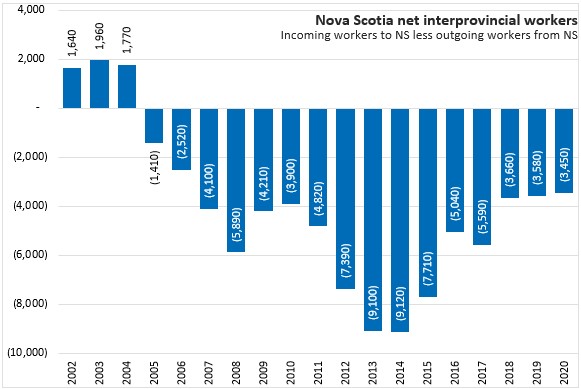
Over the period from 2002 to 2020, there was an overall rise in the number of interprovincial workers outbound from Nova Scotia to other jurisdictions peaking at 24,890 in 2014. In 2020, there were 18,540 workers from Nova Scotia outbound for positions in other provinces. The number of workers inbound to work in Nova Scotia from other provinces fell to 15,090 in 2020. Both incoming and outgoing interprovincial workers contracted during 2020, reflecting the impacts of pandemic-related restrictions.
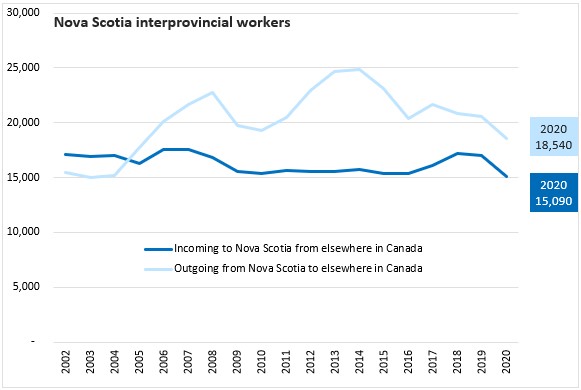
The amounts earned by Nova Scotia workers in other provinces declined to $761.2 million in 2020. Incoming workers earned $414.5 million for their work in Nova Scotia.
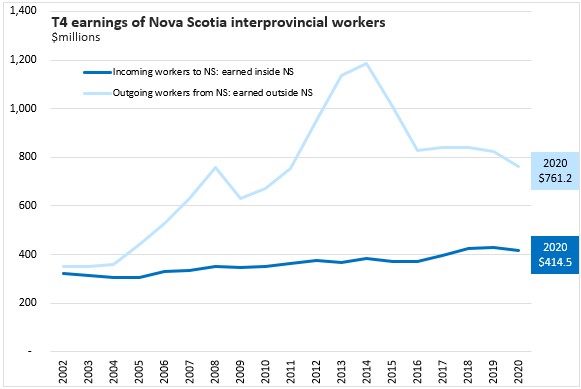
The rise in outbound interprovincial workers from Nova Scotia during 2002-2014 was concentrated in the construction sector and in oil/gas. Much of the decline in outbound workers from 2014-2019 was due to a decline in outbound workers in these sectors (particularly in construction).
In 2020, there were notable declines in interprovincial workers in all goods producing industries (resources, manufacturing, construction) as well as in retail, transportation, administrative support/call centres, accommodation/food services, professional/technical services, personal/repair services, arts/recreation, real estate, education and public administration. Only wholesale trade, information/culture, finance/insurance and health/social reported growth in interprovincial workers.
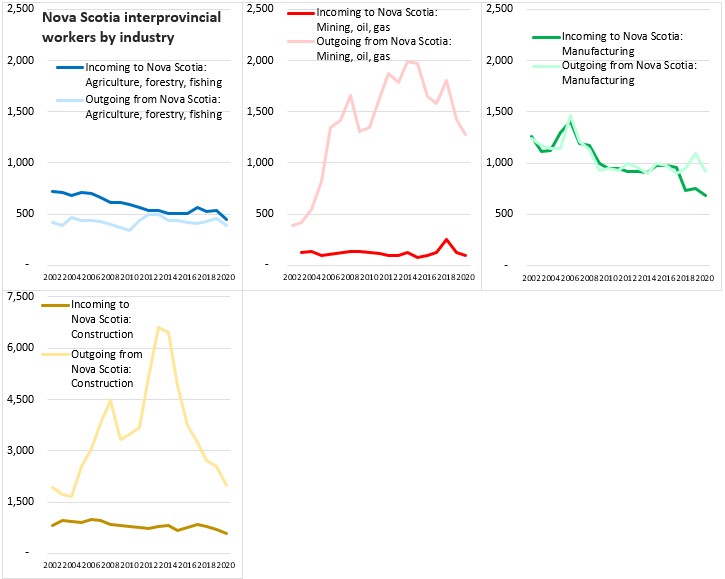
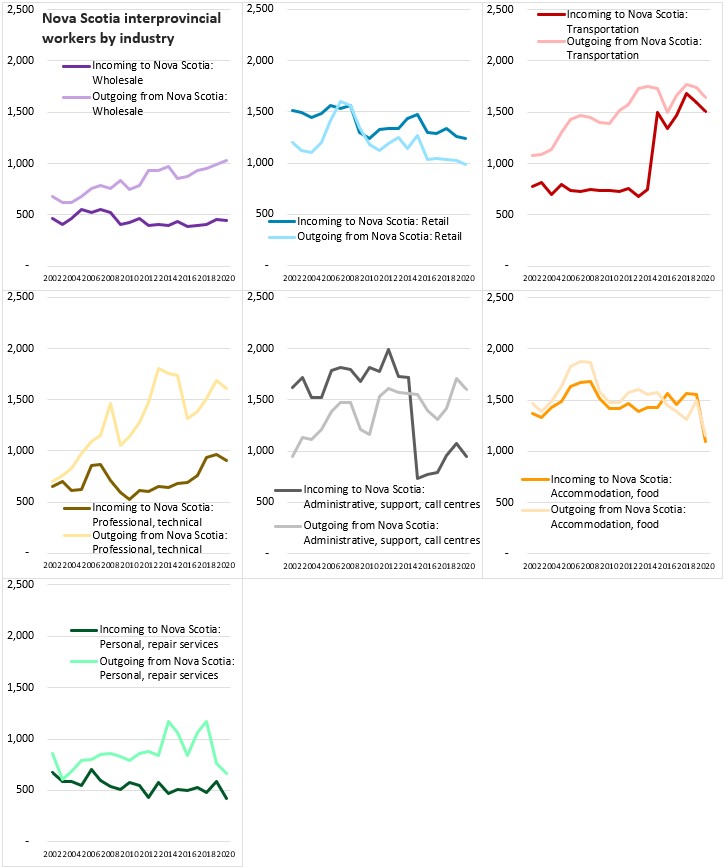
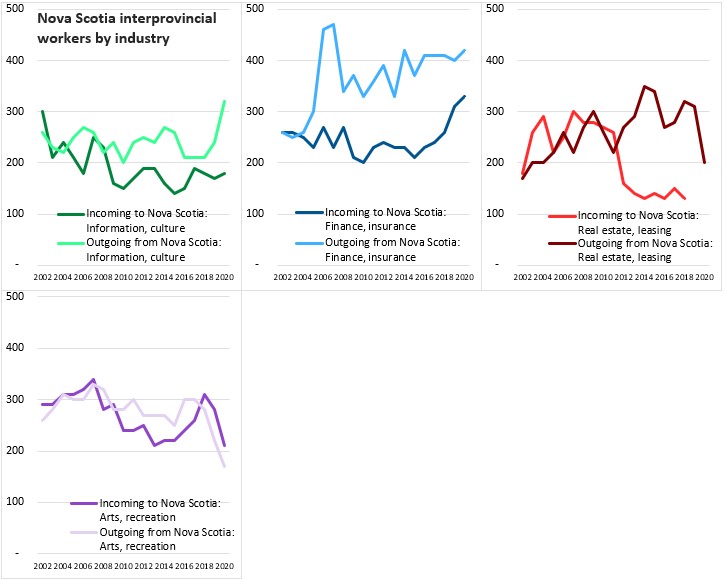
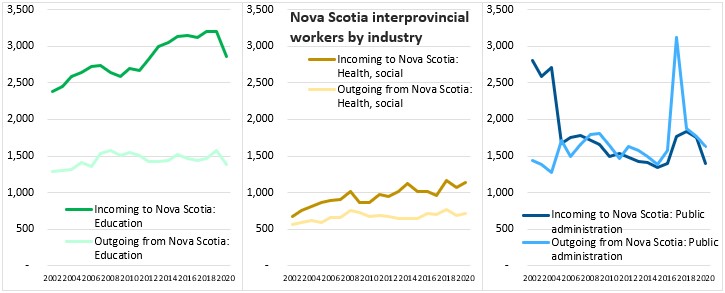
Nova Scotia has its largest interprovincial worker flows with four provinces: Newfoundland and Labrador, New Brunswick, Ontario and Alberta. Outbound interprovincial workers from Nova Scotia destined for Alberta have declined from 10,900 in 2014 to 2,920 in 2020 . New Brunswick and Newfoundland and Labrador were net positive contributors of interprovincial workers to Nova Scotia in 2020 while Ontario and Alberta were net negative drains on interprovincial workers from Nova Scotia.
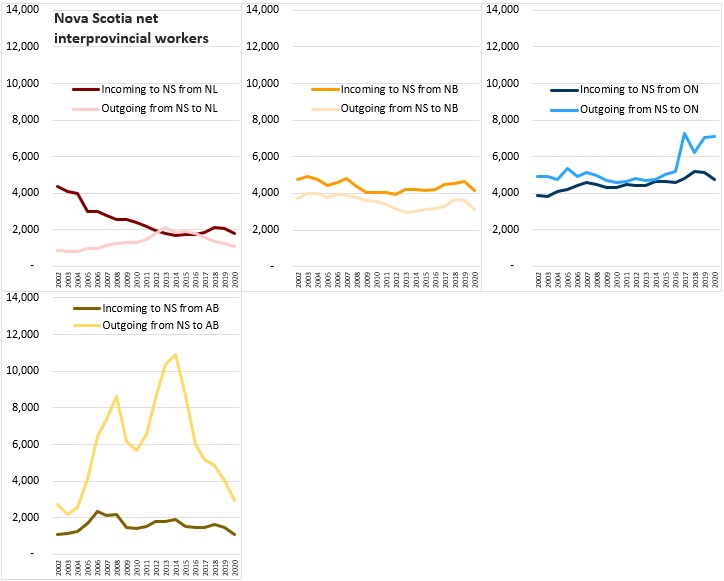
The volumes of interprovincial workers were comparatively smaller for the remaining 6 provinces (vertical axis scales are 1/10th of those for Ontario, Alberta, New Brunswick and Newfoundland and Labrador).
There were net positive interprovincial workers from Prince Edward Island and net negative interprovincial workers with all other provinces.
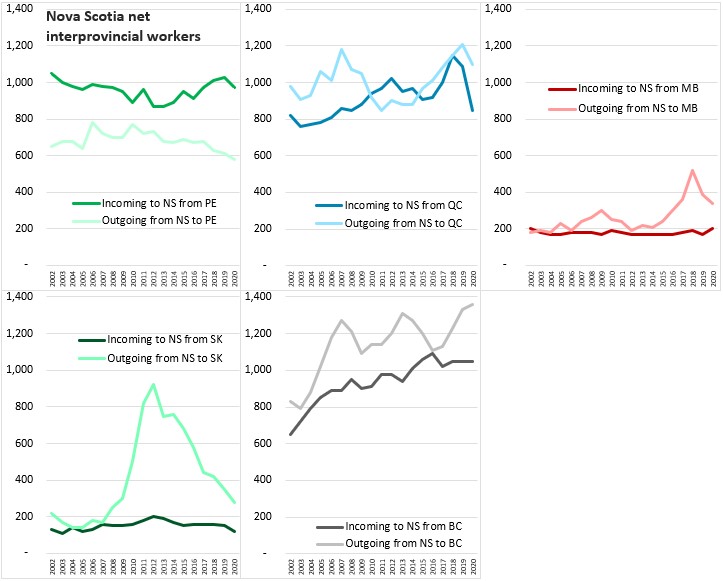
In 2020, the net impact of interprovincial workers (incoming less outbound) amounted to a drain of 0.9% on Nova Scotia's employment. This is measured as net interjurisdictional workers a share of resident workers plus those from other provinces working in Nova Scotia, less inbound workers to Nova Scotia. Only British Columbia, Ontario and Alberta reported a net gain in employment as a result of interprovincial workers in 2020.
In 2020, Nova Scotia had the second highest proportion of inbound workers (after Saskatchewan) and the 5th highest share of outbound workers Note that those inbound from another province may not count the number who work in both their home province and another province.
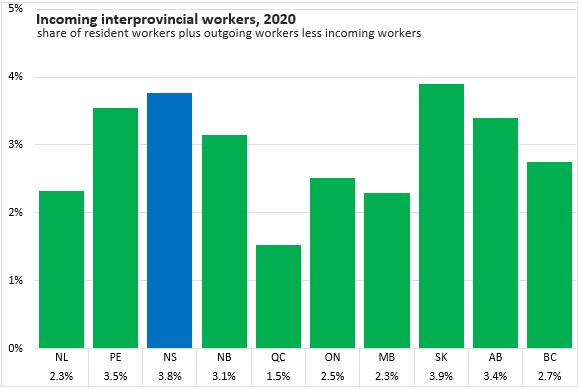
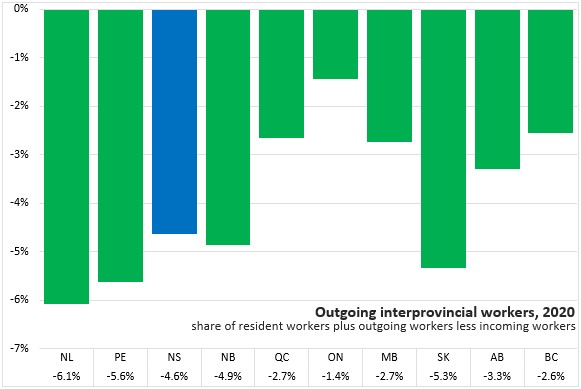
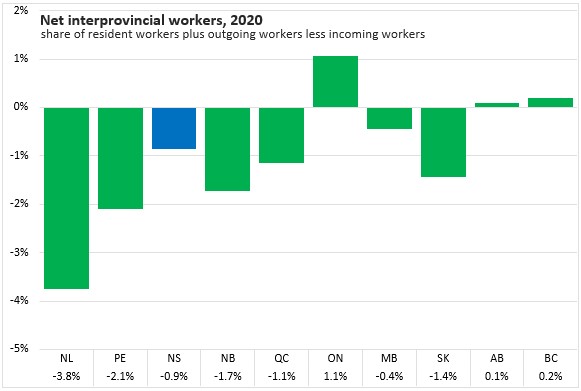
The number of incoming workers to natural resource-producing provinces (Alberta, Saskatchewan and Newfoundland and Labrador) has declined substantially over the last 8 years.
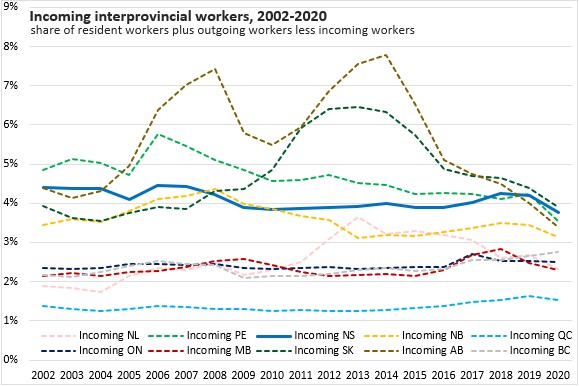
The number of outgoing workers departing the Atlantic provinces as well as Saskatchewan and British Columbia has declined in recent years.
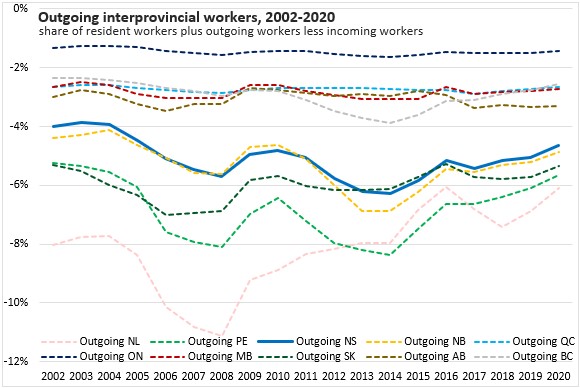
Net interprovincial worker flows have improved for all Maritime provinces in recent years. Previous net gains of interprovincial workers for Alberta and Saskatchewan have largely been eliminated. Only Ontario has maintained a steady, positive net inflow of interprovincial workers.
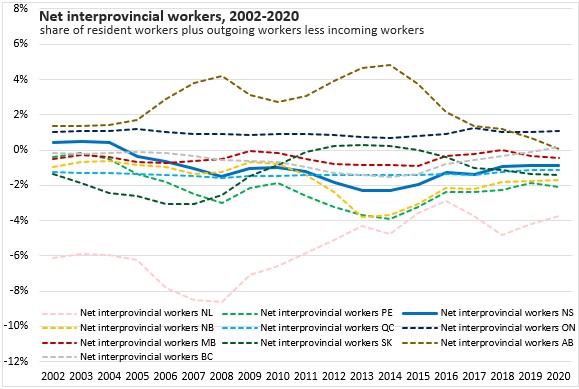
Note: interjurisdictional workers refers to the number of people who report work (T4) earnings in one province while residing in another province.
Source: Statistics Canada. Table 14-10-0448-01 Count of interjurisdictional employees and resident employees by age group and sex, 2002-2020; Table 14-10-0449-01 Aggregate T4 earnings for interjurisdictional employees and resident employees, 2002-2020; Table 14-10-0450-01 Total count and T4 earnings of interjurisdictional employees by industry of employment, 2002-2020; Table 14-10-0451-01 Total count and T4 earnings of interjurisdictional employees by target province or territory, 2002-2020
<--- Return to Archive